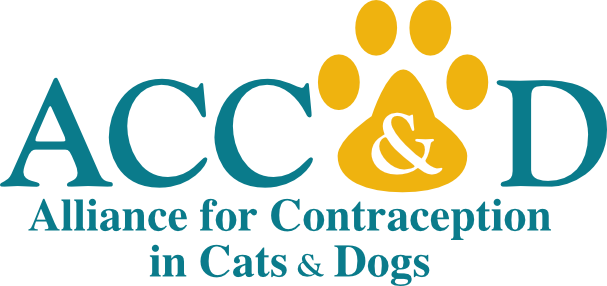
ACC&D Projects
Surgical sterilization and animal health:
developing a benchmark through data analysis

ACC&D is collaborating with Banfield Pet Hospital, the leading provider of preventive veterinary care in the U.S., to enhance knowledge about the benefits and risks of spay/neuter surgery in dogs.
Project inspiration
Surgical sterilization is widely accepted in certain countries, including the U.S., and it can be essential for humanely managing dog and cat populations. But for dogs in particular, it can be hard to determine risks and benefits of surgery at the individual level, and especially the best age to sterilize different “types” of dogs (e.g., different sizes, breeds with varied risk factors).
Several studies have explored this topic, but there are unanswered questions about the relationship between sterilization and later health/behavior problems. Some prior studies also limit their research to specific breeds, or to only purebred dogs, or to dogs seen in a specialty veterinary clinic. As a result, the findings simply can’t represent the full population of dogs.
ACC&D wants to better understand the “baseline” health implications of surgical sterilization. Once we do this, we’ll be in a better position to evaluate how future non-surgical sterilants will compare. This will support veterinarians and pet guardians considering the benefits and risks of new technologies, plus allow for more individualized veterinary care for dogs who have varied needs and risk factors.
What we’re doing
ACC&D has convened a team of experts and partnered with Banfield Pet Hospital to explore questions around surgical sterilization and health outcomes in dogs. Banfield is the leading provider of preventive veterinary care in the U.S., and its more than 1,000 clinics use the same record-keeping system. This yields a large amount of high-quality data from dogs across the country, which can then be used (following anonymizing of data, plus ethical reviews and approvals) to help improve medical care for current and future animals.
Analysis #1
The team published “Age at gonadectomy, sex, and breed size affect risk of canine overweight and obese outcomes: A retrospective cohort study using data from United States primary care veterinary clinics” in the Journal of the American Veterinary Medical Association in May 2023. You can download it at no cost here.
Companion animals in many industrialized countries are facing an obesity epidemic. In a new unpublished analysis, Banfield found a 13% increase in dogs diagnosed as overweight or obese over a two-year period, jumping from 38% of dogs seen in 2020 to 43% in 2022, and research (here and here) has found the prevalence of canine O/O to approach 60%. Obesity can reduce quality of life, and it is also associated with other health conditions, some of them fatal if left untreated.
Addressing pet obesity requires considering many factors, one of which is sterilization—and particularly the age that dogs are sterilized. With a sample of over 155,000 dogs tracked for up to seven years, we compared outcomes for sterilized versus intact dogs, and then also looked at whether the age at which dogs were sterilized affected their risk of an overweight or obese body condition score (a standardized measure used in the veterinary profession). You can view major study findings in the ACC&D press release and Banfield Exchange article.
Analysis #2
The team is currently working on a second analysis. We continue to focus on the correlation (or relationship) between sterilization and overweight or obese body condition score, but in this phase we are looking more closely at outcomes among specific breeds, rather than breed size groups. Stay tuned!
Project funding
The Morris Animal Foundation is generously funding the two preliminary analyses and resulting publications (Grant ID D22CA-513).
Project staff, contributors, & volunteers
Valerie Benka, MS, MPP, Alliance for Contraception in Cats & Dogs
Joyce Briggs, MS, Alliance for Contraception in Cats & Dogs
Jo Ann Morrison, MS, DVM, DACVIM, Banfield Pet Hospital Veterinary Science
Kate Rieke, PhD, Independent Epidemiologist
Audrey Ruple, DVM, MS, PhD, DipACVPM, MRCVS, Virginia-Maryland College of Veterinary Medicine
John Sahrman, MS, Division of Infectious Diseases, Department of Medicine, Washington University School of Medicine
Jan Scarlett, DVM, MPH, PhD, Cornell University College of Veterinary Medicine (Emirata)
Nate Spofford, MPH, Banfield Pet Hospital Data Analytics
Mike Yang, BVM, MS, Banfield Pet Hospital Data Analytics
Steve Zawistowski, PhD, CAAB, ASPCA® (Emeritus); Animal Behavior and Conservation Program, Hunter College; ACC&D Scientific Advisory Board

